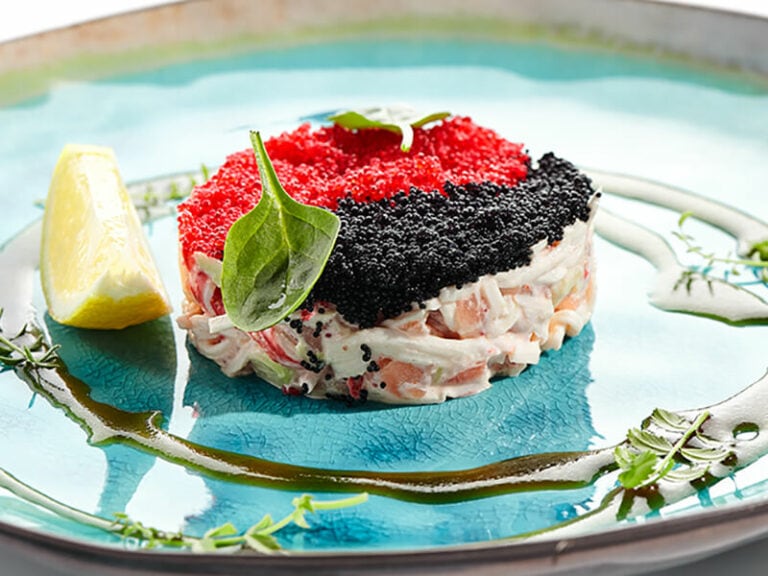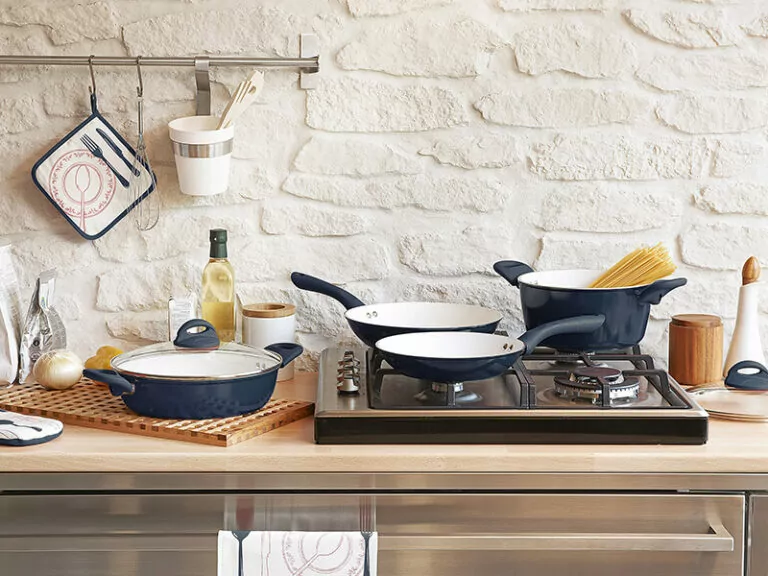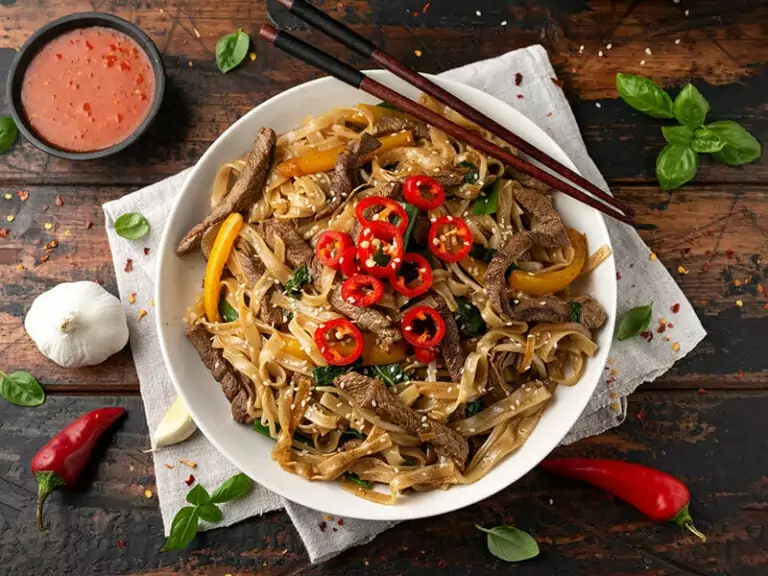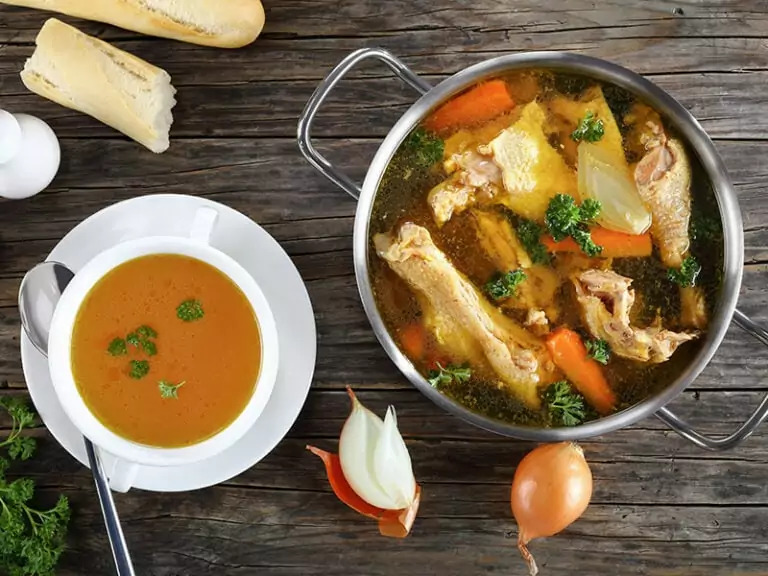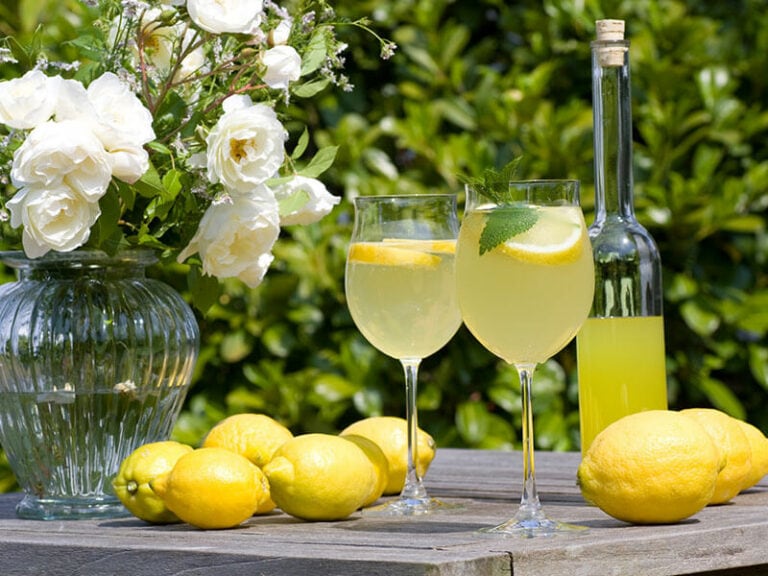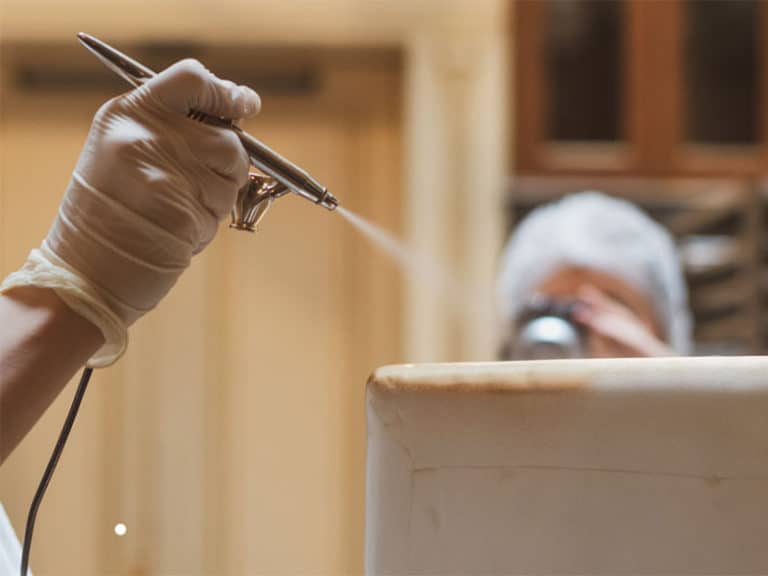For many people, converting tablespoons to cups is a real headache. One wrong step and your delicious treat could turn into a disaster.
If you’re looking for a quick and simple guide to converting cups to tablespoons for both fluid and solid ingredients, you’ve come to the right place. Today, let’s learn everything about measurement unit conversion and the best way to use your tools.
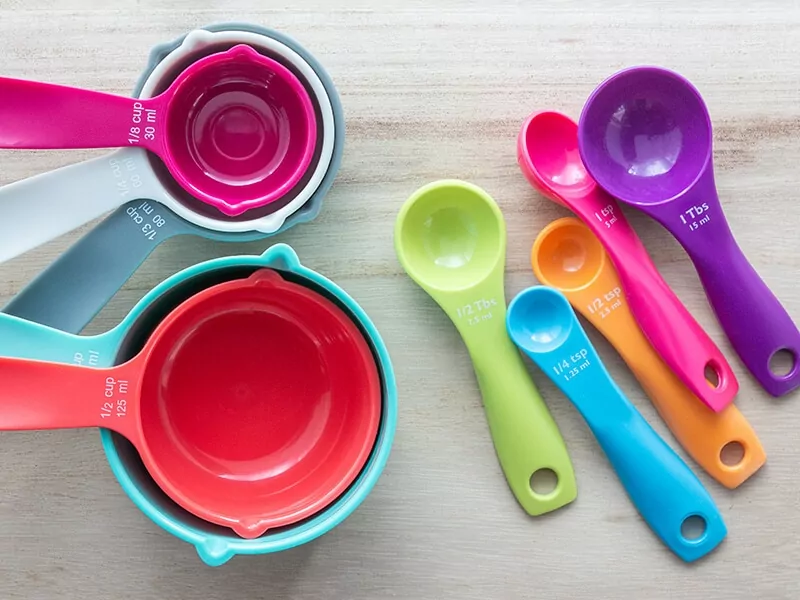
Commonly Used Measurement Units In Cooking
First, let’s get familiar with some commonly used measurement units in cooking and their abbreviations. There’s quite a lot of them, so make sure to read the table below carefully. You don’t want to mess up your dish by mistaking a teaspoon for a tablespoon.
Remember that the “cup” unit here refers to a measurement cup, not a coffee or teacup. Additionally, while 1 US cup equals 8 oz (or 236.6 millimeters), in other countries like Australia, New Zealand, or Great Britain, there are 284 milliliters in 1 cup. (1)
Ever wonder why America doesn’t use the metric system? Here’s your answer.
Measuring Liquid Ingredients Vs. Dry Ingredients
Now that you’ve remembered all the common measurement units, let’s talk a little about the differences between liquid (water, cooking oil, yogurt, butter, shortening, etc.) and dry ingredients (flour, chocolate chips, nuts, etc.)
In many cooking recipes, you’re likely to come across two different units: fluid ounce and ounce. The main difference between these two is that ounces are used to measure dry ingredients (weight), while fluid ounces refer to liquid ingredients (volume).
Because volume is simply the amount of space something takes up, liquid ingredients are quite straightforward to measure. In addition, they often have the same weight as their fluid ounce measurement. For example, 8 fl oz (or 1 cup) of water also weighs 8 oz.
Do keep in mind that most of the time, fluid ounces will be abbreviated to just oz instead of fl oz.
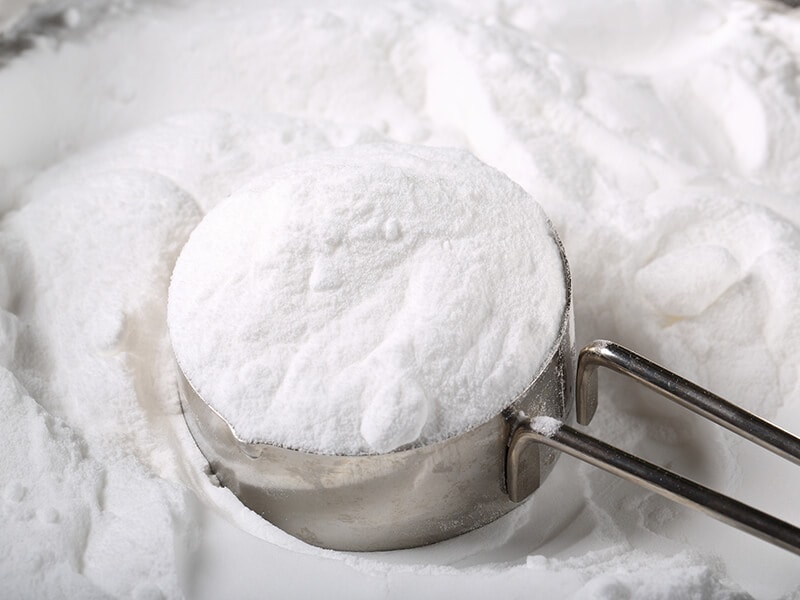
On the other hand, dry ingredients are a bit more tricky to measure. Since they can be compressed, measuring dry ingredients by cups is not always the best option. Try pressing down on a bag of flour, and you’ll understand what I mean.
As a result, it’s better to measure dry ingredients by a cooking scale. Not only does this provide you with a more accurate number, but it also takes less effort (and less cleaning).
Another great thing about a scale is, it can be used for liquid ingredients as well.
That said, if you insist on measuring dry ingredients in cups, you can still do so as many American recipes still list dry ingredients in cups or spoons. Do remember to use dry measuring cups, though.
In short, liquid ingredients (volume) can be measured pretty accurately by wet measuring cups, while dry ingredients (weight) are best measured by scales or dry measuring cups.
Quick Conversion For Liquid Ingredients
As mentioned above, liquid ingredients are pretty simple to measure. In this section, I’ll give you a quick table for converting cups to tablespoons and fluid ounces, along with some tips on using a wet measuring cup.
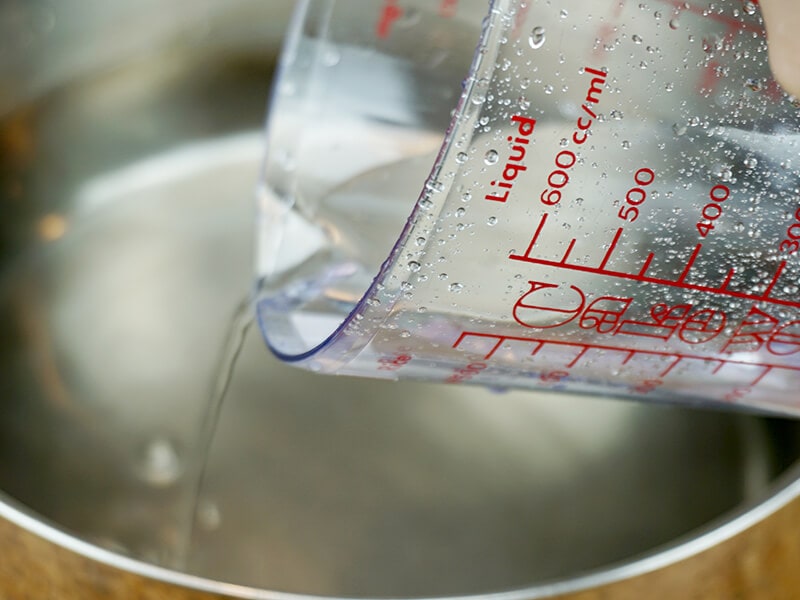
Tablespoons To Cup Conversion For Liquid
Here’s a table of volume measurements in cups and their tablespoons, fluid ounces equivalencies.
For butter or shortening, check this table out. If you buy your butter in stick form, you can also refer to its packaging for a more accurate number.
If you prefer to cook with olive oil instead of butter, you can check their conversing ratio in the table below.
| Butter | Olive oil |
| 1 cup | ¾ cup |
| ¾ cup | ½ cup + 1 tbsp |
| ⅔ cup | ½ cup |
| ½ cup | ¼ cup + 2 tbsp |
| ⅓ cup | ¼ cup |
| ¼ cup | 3 tbsp |
| 2 tbsp | 1 ½ tbsp |
| 1 tbsp | 2 ¼ tbsp |
| 1 tsp | ¾ tsp |
Tips To Effectively Use Wet Measuring Cups
There are mainly 2 types of wet measuring cups on the market. If yours comes in a set of pre-measured 1, ½, ¼ cups, simply place the cup on a flat surface and fill it up.
However, if you own a large cup with numbers on it, you’ll need to pay a bit more attention. First, place the measuring cup on a flat surface. After that, bend down so that your eyes are at the same level as the cup.
Then, slowly fill the cup until the liquid reaches an even level with the measuring mark. The bottom of the meniscus (the curve in the surface) should be right at the measuring line, not below.
A perfect way to measure liquid ingredients. Watch this video:
How To Deal With Dry Ingredients
Although the most effective way to deal with dry ingredients is by using a kitchen scale, you can still use cups to measure them if you want.
For the old-school home cooks out there, I’ll leave a conversion table for common ingredients, along with a useful way to measure dry ingredients using a cup below.
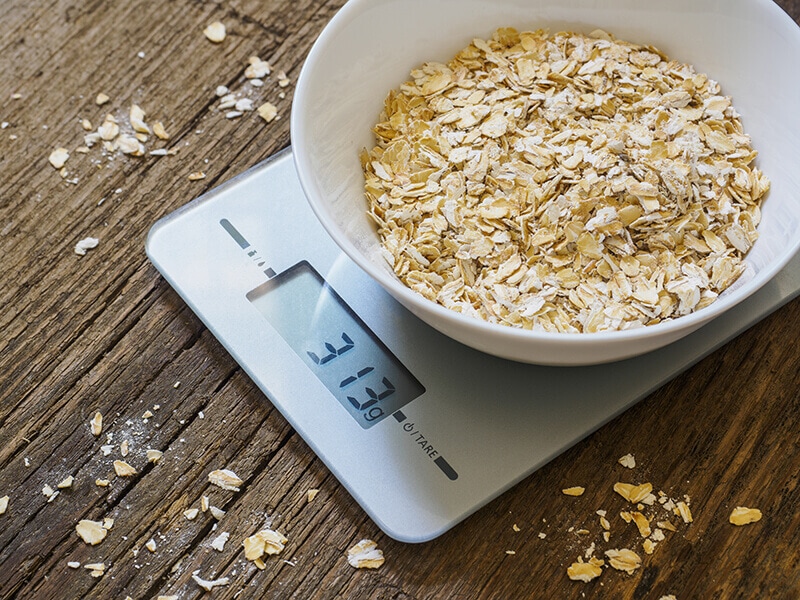
Dry Ingredients Conversion Table
If you want to measure dry ingredients in cups, you can use the table below for references.
The Best Way To Use Dry Measuring Cup
Some people choose to scoop their ingredients spoon by spoon. However, there’s a quicker and more accurate way to do this. Follow these steps to get the best out of your dry measuring cup.
- Step 1: Open the ingredient container wide enough so that it is possible to dip a measuring cup inside.
- Step 2: Dip the measuring cup in the container, fill it with the ingredient then take it out. You don’t have to worry about your ingredients overflowing the cup.
- Step 3: Place the cup on a flat surface, then use a ruler or the back of a butter knife to even out the top (any straight-edged utensil will work)
And there you have it, a decently measured cup of dry ingredients.
A professional chef explains the correct way to use a measuring cup. Watch this video:
How To Correctly Use A Kitchen Scale
When using a kitchen scale, some people accidentally weigh the mixing bowl together with the ingredients. To avoid this from happening, always press the “tare” or “zero” button before weighing a new ingredient.
Here’s an easy step-to-step instruction on how to use your kitchen scale.
Step 1: Select your preferred measurement unit by pressing “Mode” or “Unit”.
Step 2: Place the mixing bowl on your scale. You’ll see that the scale has weighed your bowl.
Step 3: Press the “Tare” or “Zero” button to reset the weight to 0.
Step 4: Weigh the first ingredient.
Step 5: Press the “Tare” or “Zero” button to reset the scale again.
Step 6: Add the second ingredient to the bowl.
Step 7: Repeat until you’ve measured all the necessary ingredients.
Learn how to use a digital kitchen scale effectively. Watch this video:
Other Measurement Conversion
Apart from cup and tablespoon, you’ll sometimes see teaspoon, pint, or quart in your recipes as well. When this happens, you can simply convert them into the measurement units that you’re familiar with by following these tables.
Teaspoon to Tablespoon to Cup
| Teaspoons | 3 tsp |
| Tablespoons | 1 tbsp |
| Cups | ¹⁄₁₆ cup |
Pint, Quart, and Gallon to Tablespoons to Cups
| Pints | Cups | Tablespoons |
| 1 Pint | 2 cups | 32 |
| 1 Quart = 2 pints | 4 cups | 64 |
| 1 Gallon = 4 quarts = 8 pints | 16 cups | 256 |
Frequently Asked Question
Measurement units can be confusing, so it’s easy to understand why you still have some lingering questions. Check out these FAQs to see if you can find the answers.
No More Confusion In The Kitchen
With all this knowledge at hand, you’re now ready to deal with any ingredient measuring units, whether it is a tablespoon, cup, teaspoon, or even something like “a dash”.
If you have any more tips for converting tablespoon to cup, please share them in the comment. Lastly, don’t hesitate to like this post if you find it helpful and share it with other
home cooks!
References
- Committee, T. B. C. A., (2015). Imperial and U.S. Systems of Measurement [online]. BCcampus Open Publishing – Open Textbooks Adapted and Created by BC Faculty. Available from: https://opentextbc.ca/basickitchenandfoodservicemanagement/chapter/imperial-and-u-s-systems-of-measurement/

